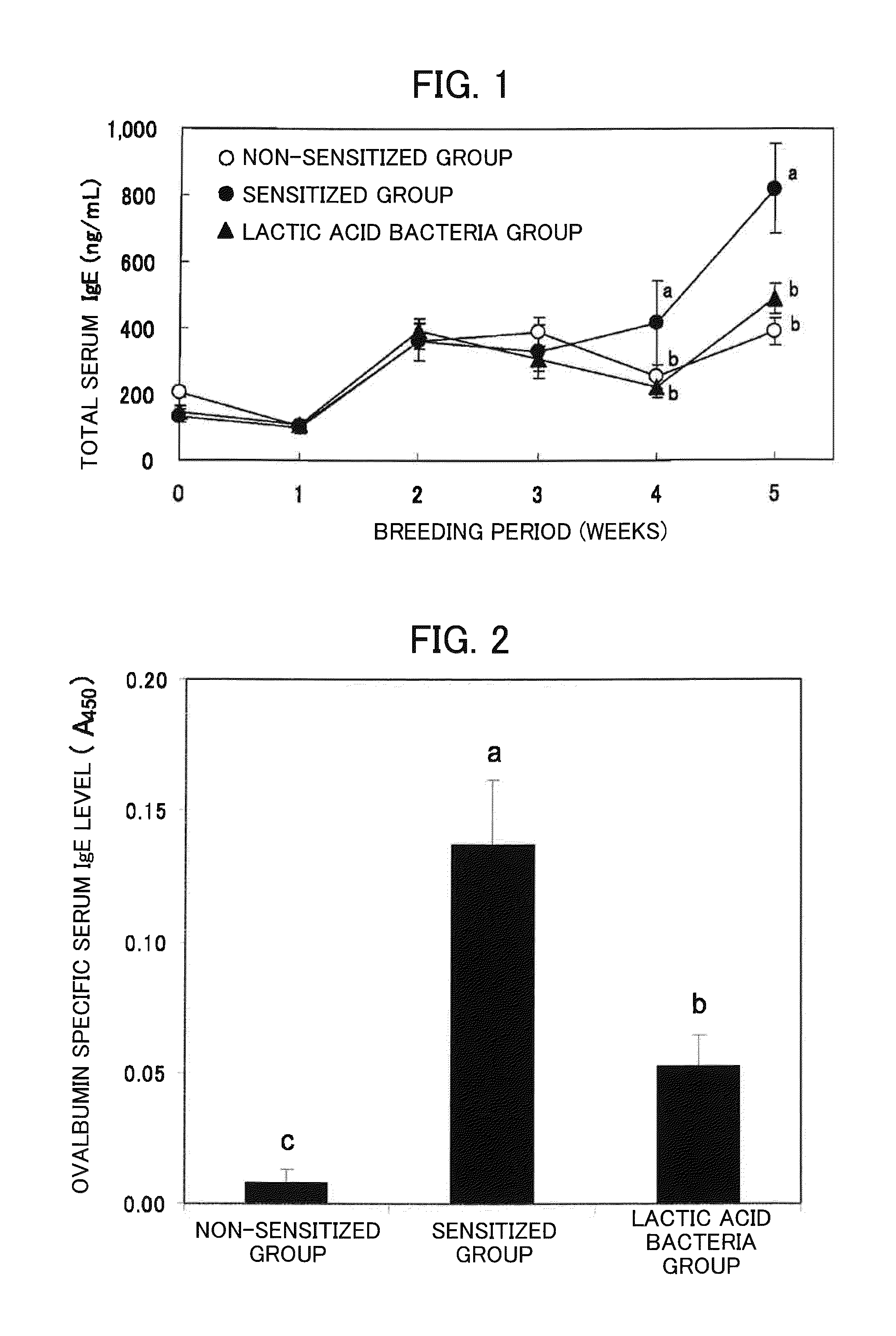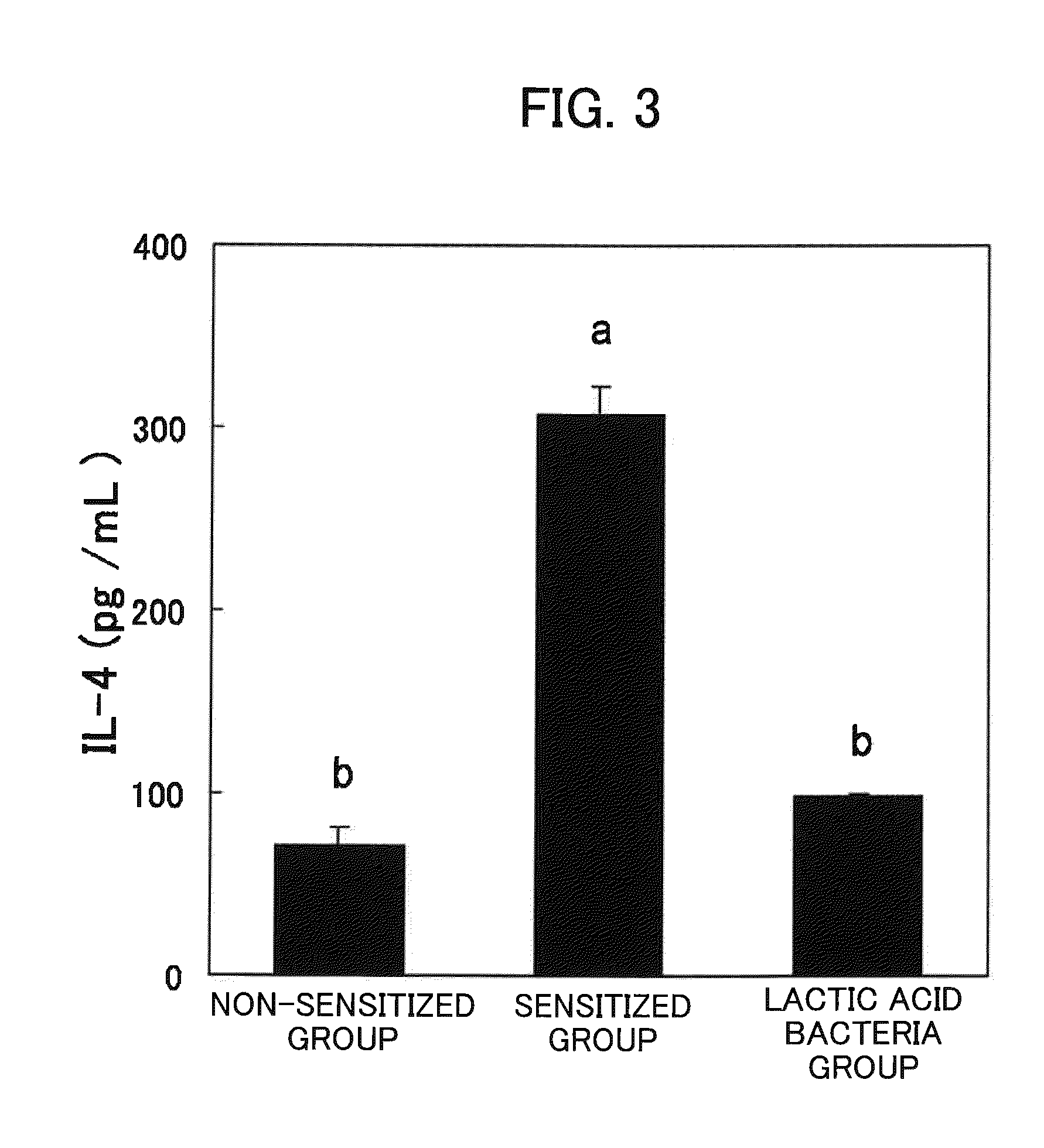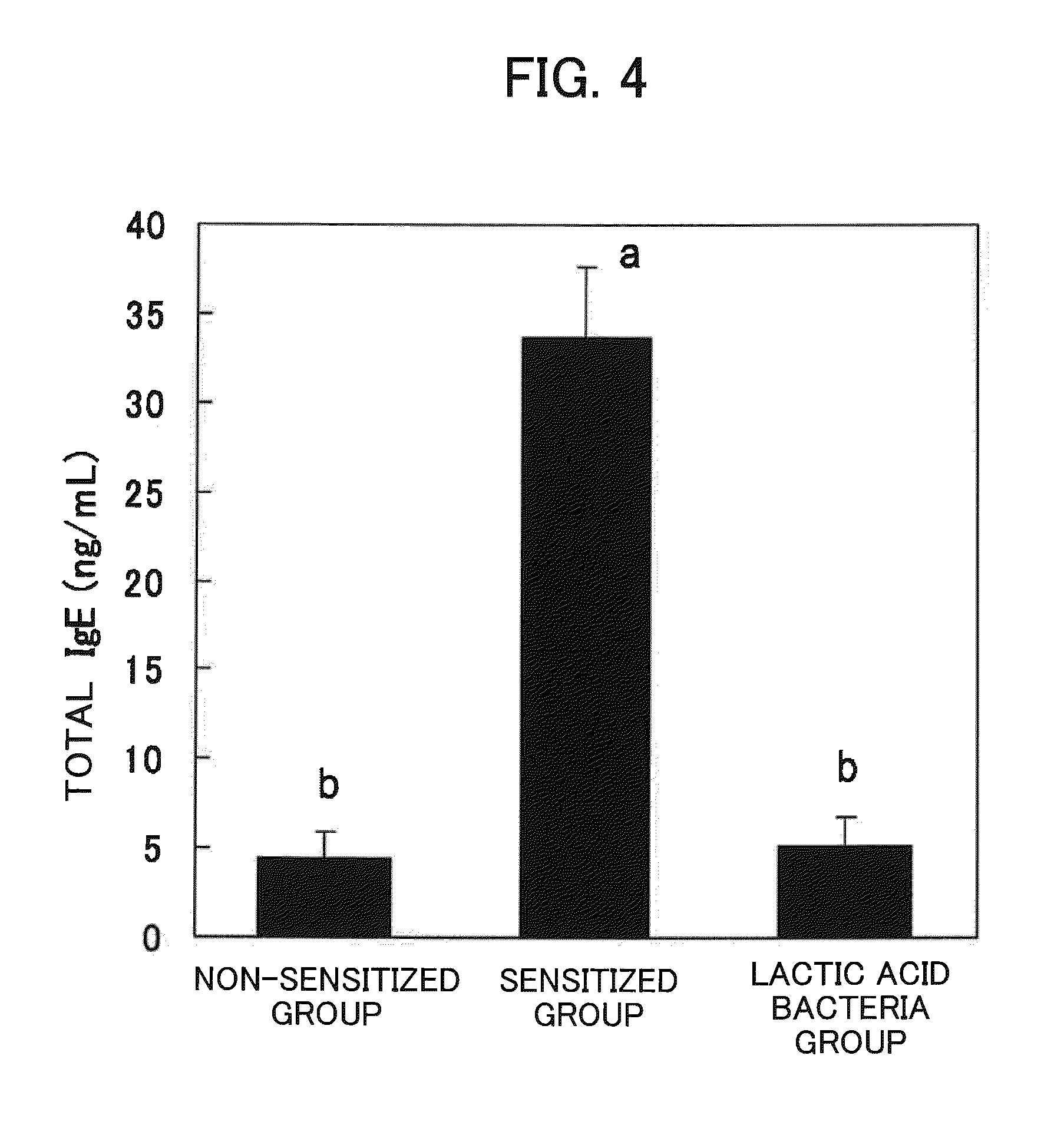Lactic acid bacterium having anti-allergic activity and pharmaceutical composition
a technology of lactic acid bacteria and anti-allergic activity, which is applied in the field of new drugs, can solve the problems of suppressing the overall immunity system, unable to develop agents, and allergic symptoms typified by inflammation
- Summary
- Abstract
- Description
- Claims
- Application Information
AI Technical Summary
Benefits of technology
Problems solved by technology
Method used
Image
Examples
example 1
1. Screening of lactic acid bacteria having an anti-allergic action and demonstrating superior growth on the surface of polished white rice.
(1) Source of Lactic Acid Bacteria Used in Screening
[0035]The lactic acid bacteria used in screening have been newly separately from fermented food products using rice as a raw material (including powdered rice husk, malted-rice bean paste, sake lees, and fermenting mash). The names of 39 lactic acid bacterial strains that were confirmed to belong to the genus Lactobacillus preliminary study are shown in Table 1.
(2) In Vitro Evaluation of Anti-Allergic Action of Lactic Acid Bacteria
[0036]Spleen cells extracted from an ovalbumin (OVA) sensitized mice were used to conduct anti-allergic testing in vitro. Three female mice purchased at six-weeks of age (Balb / c, Charles River) were housed under SPF conditions and subjected to a 0.5 mL intraperitoneal injection of a suspension of 1 mg / mL Al(OH)3 and 2 mg / mL OVA per mouse at a frequency of once weekly....
example 2
2. Characterization of Lactic Acid Bacterium According to the Present Invention
Analysis of 16S rRNA Sequence
[0042]The sequence of a polynucleotide fragment in the 16S ribosomal RNA (hereinafter referred to as “rRNA”) genetic region of a microorganism amplified according to method known to a person ordinarily skilled in the art using a microbial DNA template of the lactic acid bacterium Lactobacillus paracasei K71 strain according to the present invention is shown in Sequence No. 1. There are more than 489,840 types of microbial 16S rRNA. After alignment, whole length sequences or partial sequences of such rRNA has been used to create a database and can be used through the Ribosomal Database Project II ((RDP II, http: / / rdp.cme.msu.edu / ) (Release 9.59, current at Mar. 5, 2008)) (Maidak, B. L et. al. 2001, Nucleic Acids Res., 29, pp. 173-174). As a result of searching the above database using the sequence in Sequence No. 1, 100% homology was found with a nucleotide sequence of a 16S rR...
example 3
In vivo Evaluation of Anti-Allergic Action of Lactic Acid Bacterium according to the Present Invention
(1) Effect on Allergen Sensitized Mice
[0048]IgE resulting from repetitive oral administration to allergen sensitized mice of Lactobacillus paracasei K71 strain that is the lactic acid bacterium according to the present invention, and the production of cytokines (IL-4) affecting allergies were examined using the method described below.
[0049]Eighteen female mice (Balb / c) at six weeks of age were purchased from Charles River Inc. and housed in a conventional environment. After 4 days of acclimatization, the mice were divided into three groups of six mice, and 50 μL of a microbial suspension (20 mg / mL) of Lactobacillus paracasei K71 strain that is the lactic acid bacterium according to the present invention was repetitively given by daily oral administration to one of the groups. One week after commencing administration, blood was drawn at a frequency of once a week from the caudal vein...
PUM
| Property | Measurement | Unit |
|---|---|---|
| temperature | aaaaa | aaaaa |
| temperature | aaaaa | aaaaa |
| pH | aaaaa | aaaaa |
Abstract
Description
Claims
Application Information
 Login to View More
Login to View More - R&D
- Intellectual Property
- Life Sciences
- Materials
- Tech Scout
- Unparalleled Data Quality
- Higher Quality Content
- 60% Fewer Hallucinations
Browse by: Latest US Patents, China's latest patents, Technical Efficacy Thesaurus, Application Domain, Technology Topic, Popular Technical Reports.
© 2025 PatSnap. All rights reserved.Legal|Privacy policy|Modern Slavery Act Transparency Statement|Sitemap|About US| Contact US: help@patsnap.com



